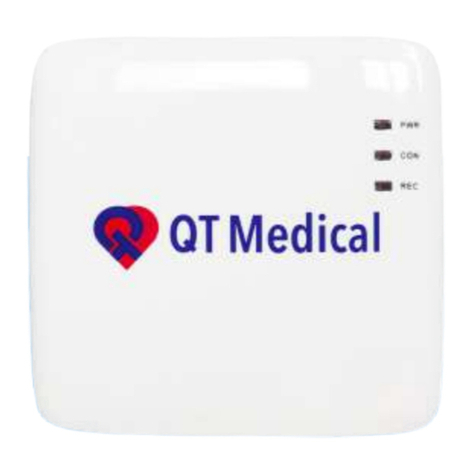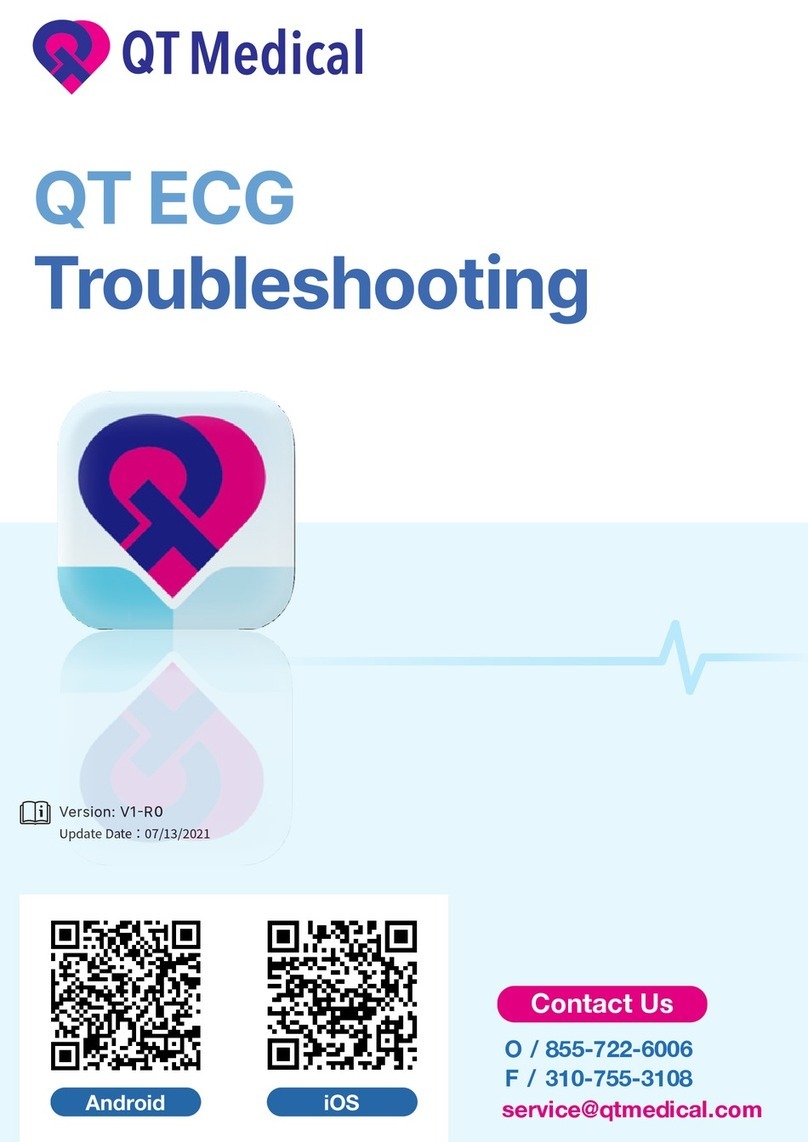1. INTRODUCTION
This user manual provides information on the QT ECG system and instructions on
how to use it.
1.1 System Description
The QT ECG system is a hand-held, cordless 12-lead electrocardiograph (ECG)
system with Bluetooth connectivity. The QT ECG system consists of 3 major
components:
●The QT ECG Recorder – Compact device that records 12-lead, resting
electrocardiograms, then transmits the recorded data to a mobile device
(smartphone, tablet, etc.) paired via Bluetooth. A Bluetooth-enabled mobile
device (not included) is needed to operate the QT ECG Recorder, and to send
the recoded rhythm strip to a cardiologist or licensed physician for review.
●The QT Electrode Strip – Disposable, patented electrodes that are
prepositioned on a self-adhesive strip
●The QT ECG App – Software that lets you use your mobile device to operate the
QT ECG recorder, then send the recorded data via email to a certified medical
professional for review.
Note: To use the QT ECG system, you will need to have a Bluetooth- enabled
mobile device.
Warning: Use only manufacturer-approved accessories with the QT ECG.
Warning: The QT ECG is not intended for treatment or monitoring. It captures
data that reflect the patient’s physiological condition. The data must be reviewed
and analyzed by a cardiologist or trained physician before a diagnosis is made.
1.2 Indication for Use
The QT ECG System is intended to acquire, record and process an
electrocardiographic signal so that it can be transmitted digitally via Bluetooth
technology to a cell-phone or mobile device, then to a remote location. The QT
ECG System is indicated for use on adult patients and pediatric patients age 18
2






























